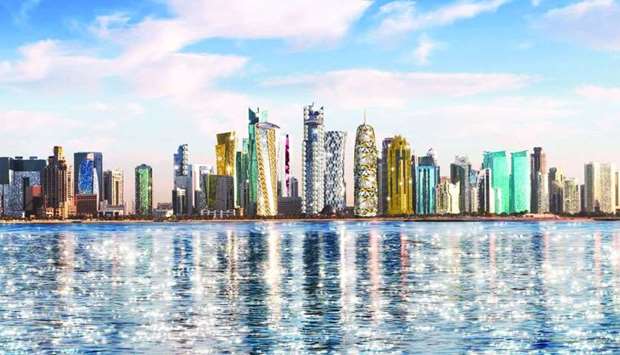Strength in Qatar’s non-oil sector will counterbalance the country’s oil sector weakness in 2022, Oxford Economics said in an economic commentary.
Qatar's GDP grew at a 2.5% rate in the first quarter (Q1) of the year, up from 2.2% in Q4, 2021, Oxford Economics noted.
Growth in non-oil sectors such as construction, transportation, and real estate led the expansion but was offset by mining and manufacturing declines.
The latest Purchasing Managers Index (PMI) data continue to indicate an improvement in the non-oil sector, corroborating our view that the non-oil sector strength will offset oil sector weakness and boost overall growth this year.
“We see Qatar's GDP growing at a 3.6% pace in 2022,” Oxford Economics said.
In 2023, Oxford Economics said Qatar’s GDP will grow at 3.5%.
Oxford Economics has projected that Qatar’s current account surplus (as a percentage of its GDP) will be 16.7 this year and 14.3 in 2023.
The country’s fiscal balance (as a percentage of its GDP) will be 9.1 this year and 8.9 in 2023.
Qatar’s inflation, Oxford Economics has projected to hit 3.9% this year and 1.9% in 2023.
The June PMI survey for the three largest economies – Saudi Arabia, the UAE, and Qatar - continued to show strong non-oil private sector activity. The Saudi print at 57 was the highest in the past eight months with business activities improving even as cost pressures intensified, leading companies to pass on added costs to customers.
The upturn in the non-oil economy is primarily coming from Saudi Arabia's construction sector, where output strengthened to a three-year high. In the UAE, cost pressures have reached an 11-year peak, with the ratio between input and output costs at a record high.
That said, demand remains robust, with new orders increasing amid price promotions, Oxford Economics noted.
In a recent report, Oxford Economics said the Middle East and North Africa (MENA) region possesses the financial and natural resources to transition towards low-carbon energy sources, Oxford Economics said in a report.
By leveraging current economic diversification plans, the region can bridge the investment gap with "greener" capital stock. In doing so, some countries in the GCC could emerge as leaders in the fight against climate change.
The report noted MENA has great potential for solar and wind energy, which can be harnessed with improvements in storage technology.
The region also has potential for hydrogen and carbon capture, storage, and use (CCUS), it said.
Growth in non-oil sectors such as construction, transportation, and real estate led the expansion but was offset by mining and manufacturing declines.
The latest Purchasing Managers Index (PMI) data continue to indicate an improvement in the non-oil sector, corroborating our view that the non-oil sector strength will offset oil sector weakness and boost overall growth this year.
“We see Qatar's GDP growing at a 3.6% pace in 2022,” Oxford Economics said.
In 2023, Oxford Economics said Qatar’s GDP will grow at 3.5%.
Oxford Economics has projected that Qatar’s current account surplus (as a percentage of its GDP) will be 16.7 this year and 14.3 in 2023.
The country’s fiscal balance (as a percentage of its GDP) will be 9.1 this year and 8.9 in 2023.
Qatar’s inflation, Oxford Economics has projected to hit 3.9% this year and 1.9% in 2023.
The June PMI survey for the three largest economies – Saudi Arabia, the UAE, and Qatar - continued to show strong non-oil private sector activity. The Saudi print at 57 was the highest in the past eight months with business activities improving even as cost pressures intensified, leading companies to pass on added costs to customers.
The upturn in the non-oil economy is primarily coming from Saudi Arabia's construction sector, where output strengthened to a three-year high. In the UAE, cost pressures have reached an 11-year peak, with the ratio between input and output costs at a record high.
That said, demand remains robust, with new orders increasing amid price promotions, Oxford Economics noted.
In a recent report, Oxford Economics said the Middle East and North Africa (MENA) region possesses the financial and natural resources to transition towards low-carbon energy sources, Oxford Economics said in a report.
By leveraging current economic diversification plans, the region can bridge the investment gap with "greener" capital stock. In doing so, some countries in the GCC could emerge as leaders in the fight against climate change.
The report noted MENA has great potential for solar and wind energy, which can be harnessed with improvements in storage technology.
The region also has potential for hydrogen and carbon capture, storage, and use (CCUS), it said.


